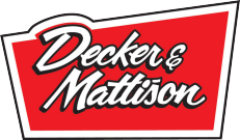HVAC -“Heating, Ventilation, Air Conditioning”
Types:
Radiant – Radiates heat without air movement
Central Air – Air is distributed evenly throughout via ducts and registers
Electric heat – Heat is generated by electric elements
Heat Pump – Heat is transferred to and from another source rather than being generated
Geothermal – Heat pump that specifically transfers heat to and from the ground
PTAC/Mini-Split – Small ductless units for conditioning an open space
Boiler/Hydronic – Water is heated and circulated to radiators, under floor tubing, or air handlers
Under Floor heat – Heat is circulated in tubing in the floor to radiate heat to the space
Radiant heat can be generated by console heaters, wall furnaces, floor furnaces, hydronic radiators, under floor heat, infra-red heaters, tube heaters, electric or hydronic heat embedded in ceilings or walls. It has the advantage of being quiet, low maintenance, and because it heats objects instead of air, actual temperatures can be set lower at the thermostat, decreasing energy costs. The main disadvantage is that it can’t be used to cool, as air conditioning requires air distribution. (back to top)
Central air conditioning and heat is probably the most common type and can be used with electric, gas, or oil furnaces, boilers, air conditioners, and heat pumps. It has the advantage of being able to control output to different zones, the ability to add air filtration, humidification/dehumidification, anti-bacterial, and other options that can utilize the air circulation functions. Maintenance to retain proper airflow is critical for efficient operation of this type of system, i.e. changing filters regularly and cleaning outdoor units. (back to top)
Electric heat includes central furnaces, baseboard heaters, unit heaters, commercial package units, and boilers. Generally, electric heat carries high energy costs, but is typically very low maintenance. For buildings that require to be heated with only electricity, heat pumps are a far more efficient alternative. The efficiency of electric heat cannot change, meaning that it will always produce 3.41 BTU’s of heat per watt of power. This is true whether you are heating with any plug into the wall type heater, your electric cook stove, or even a hair dryer. For example, if it says it uses 1000 watts, it puts out 3,410 BTU’s of heat, whatever kind of appliance it is. (back to top)
A heat pump is just an air conditioner that reverses it’s cycle to heat in the winter. Cool is never created, heat is just transferred out of a structure to make the space inside cooler. Using the example of a common air conditioner that sits outside, the air coming out of the outdoor unit in the summer is warmer than the surrounding air, that is the heat being transferred from the inside space, leaving it cooler. Similarly, a heat pump reverses that cycle in the winter and transfers heat from the air outside to the structure, so the air coming out of the outdoor unit will be colder than the surrounding air. (back to top)
Geothermal heat pumps utilize the ground to transfer heat to and from the conditioned space, either by circulating water through the heat pump and out to the ground, (the most common practice), or by having part of the heat pump itself buried in the ground to directly transfer the heat. These are very ecologically friendly as they are very efficient to operate and work by transferring heat from a renewable energy source. Another example of a renewable energy source is electric wind generators. Geothermal heat pumps can also be installed as an “open loop” system, which utilizes fresh well water to transfer the heat, and the water is returned to the ground, having only had the temperature changed somewhat. (back to top)
PTAC‘s or package terminal air conditioners, and ductless mini-split units are smaller wall mount units that heat and cool only the space they are installed in. PTAC’s are what you find in hotel rooms, and are completely self-contained. Mini-split systems have gained popularity in recent years due to their versatility, small size, ease of installation, and high efficiency ratings. They have separate indoor and outdoor units that work together in much the same way as a conventional central air system, but because there is no ductwork, a separate indoor unit is required for each conditioned space. One outdoor unit can service many different indoor units to provide tailored conditioning for each space, as each indoor unit has its own control. These systems are very efficient and extremely quiet as well. (back to top)
Boilers, or hydronic heat, heat water with gas, oil, or electricity, and the water is circulated through radiators, air handlers, or under floor heat. These systems are low maintenance and boiler units come in a variety of efficiencies that match gas furnace efficiencies. Hydronic heat is very versatile in that it is easy to create and control different size heating zones, and can also be used to heat water for domestic use much more efficiently than basic water heaters. Boiler systems typically have a longer life cycle than other systems as well. (back to top)
Underfloor heat is a system of special tubing that heats floors from below to create a very comfortable radiant heat. The tubing can be embedded in a concrete floor or installed on existing flooring of all types with newly developed products. Underfloor heat can be supplied by any water heat source including boilers, solar, or conventional water heater. (Note: water heater must be rated for under floor heat, check the label.) Underfloor tubing cannot be used for cooling functions due to the condensation it would create. (back to top)
